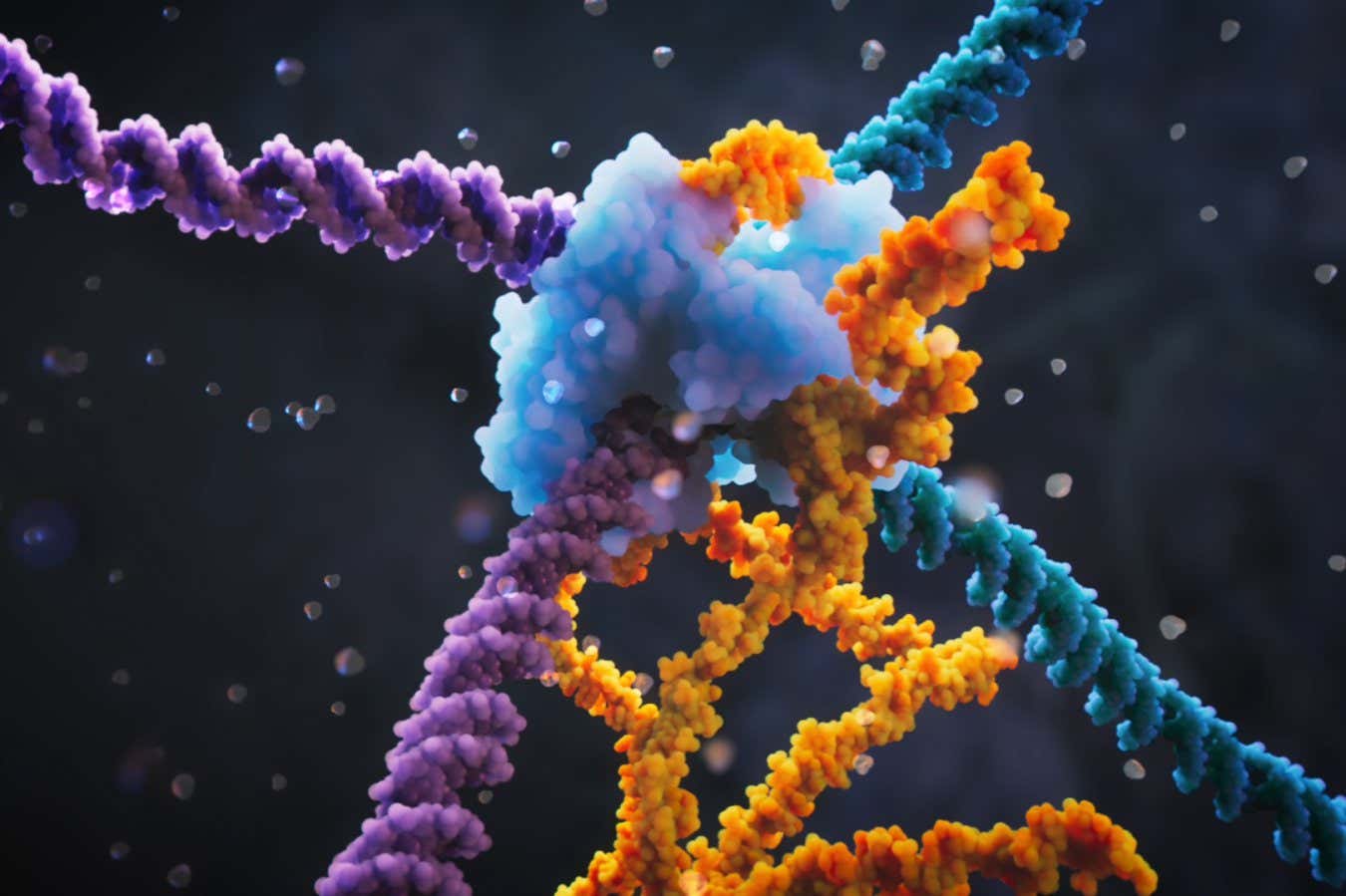The CRISPR gene-editing technique has revolutionised biology, but now an even more powerful system called bridge editing could let us completely reshape genomes
By Michael Le Page
26 June 2024
Bridge editing physically links two strands of DNA
Visual Science
A powerful form of DNA-editing machinery discovered in bacteria might allow us to make much bigger changes to genomes than is currently possible with CRISPR-based techniques. However, it isn’t yet clear whether it will work in human cells.
Patrick Hsu at the Arc Institute in California calls the new genome editor the “bridge editing” system because it physically links, or bridges, two pieces of DNA. It can be used to alter huge sections of a genome, says Hsu, whose team worked out how sequences of “parasitic” DNA in bacteria naturally use the system to replicate, and how it might be adapted for genome editing.
Read more
A new understanding of tinnitus and deafness could help reverse both
Advertisement
“We’re excited about the potential to do much broader genomic changes beyond what we can currently do with CRISPR,” he says. “We think this is an important step towards the broader vision of genome design.”
CRISPR gene editing has revolutionised biology since it was unveiled in 2012. It is being used for many different purposes, and the first CRISPR-based treatments were approved last year. However, the basic form of CRISPR, which uses the Cas9 protein, is more of a gene destroyer than a gene editor.
There are two parts to the standard CRISPR Cas9 protein. One part links up with a guide RNA molecule and seeks out any DNA that matches a certain section of the guide RNA. Because it is easy to make custom guide RNAs, this means that CRISPR Cas9 can be “programmed” to seek out any part of the genome.
